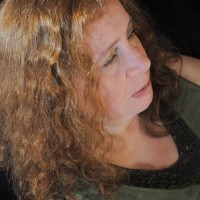SEARCH






|
|
|
|


Guido Brandt has recieved a lot of attention for his photo "The Chance Encounter". It has been requested for prints and has also gained success at a number of photo competitions. Besides being a wonderful photo, it is also an excellent example on how the story of a photo can develop during the editing process. Today, he will tell you how he made it.
I took this photo more than a year ago while on holidays with my wife in London. As we travelled through the city using the tube a lot, I was intrigued by the different character and styles the various subway stations have.
Being an engineer, I started out my photography being fascinated by architecture – I guess I can relate to lines and geometries a lot. So naturally, when I saw the converging lines of the 3 three escalators and the lighting rails above, I was drawn to this ‘space ship’ scene. As I wanted to have a sharp image and had no tripod available, I needed to crank up the ISO on the camera to maximum to achieve a ‘safe’ exposure.
Post-Processing
1) My first interpretation of the image was a combination of an architectural and a ‘street’ photo. I did basic noise reduction and I applied a photo filter on the image that gave it a kind of ‘metal’ or ‘alien’ like look. I added a slight warming filter to give the image a little bit more ‘soul’. At this stage the image had no blur and appeared too static.
2) Therefore, I experimented with adding selective blur to the 3 escalators only or to the whole scene. This kind of ‘creative editing’ was quite new to me. I was unsure about the effect on the viewers, so I submitted the image to the 1x critique section to gain some feedback from other viewers.
3) As usual I got extensive and very valuable feedback from members, in particular that the current implementation would make some viewers dizzy. I also received the very valuable advice, that a ‘creative edit’ do not necessarily need to look plausible and in the case of this image could include areas with and without blur, not following reality.
4) With this advice I developed the image further – I also noticed that a guy on the left downwards escalator was ‘looking’ at a girl on the right escalator upwards. This reminded me of two strangers meeting in a fleeting moment and I decided to select this as my main story in this image and to process the image further in this direction.
5) I used smart filters and radial blur to create the motion effect – the smart filter also allowed me to fine tune. Using a mask I could specify exactly where and to what strength I wanted to apply the motion effect. I use layer masks a lot to take control of a specific effect – it gives you much better control over parts of the image.
6) Processing finished with local color adjustments, cloning, sharpening, dodging and burning.
Hints
1) Carefully analyse the image – the real story might be amongst various aspects hidden in the photo.
2) Once identified, try everything to increase the impact of the story onto the viewer – even if this may include processing the image in an ‘unrealistic’ way.
3) A story makes a strong photo – people can connect much easier to the image that way.
Biography
Guido Brandt is 43 years old and lives in Melbourne, Australia. He works as a project manager in a biomedical company developing products for blood coagulation therapy. He describes himself as a ‘serious’ amateur and somewhat of a generalist photographer. His main persuits are however architecture, land- and seascape and yachting photography.
 | Write |
 | Anna Golitsyna A wonderful photograph and an insightful tutorial! |